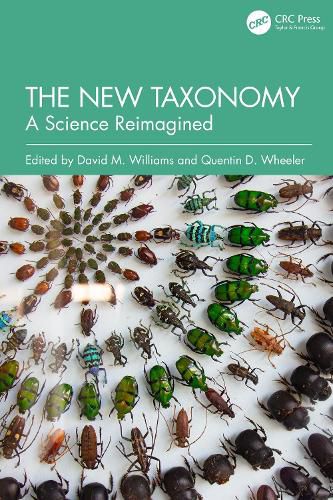Readings Newsletter
Become a Readings Member to make your shopping experience even easier.
Sign in or sign up for free!
You’re not far away from qualifying for FREE standard shipping within Australia
You’ve qualified for FREE standard shipping within Australia
The cart is loading…






Today molecular data is part of many biological studies, including taxonomic works. Such data is embraced by taxonomists for good reasons. When combined with comparative morphology, palaeontology, and embryology, it creates a rich, integrated overview of the history of life. This book is intended as a clear articulation of the mission, goals, and needs of fundamental taxonomists and a planetary-scale inventory of species by revisiting the idea of taxonomy as a fusion of the traditional questions asked by taxonomists and the latest technologies. It is a clear roadmap to a taxonomic renaissance and world species inventory.
Key Features:
Establishes the role and responsibilities of natural history museums to baseline taxonomic studies Emphasizes the potential of 'descriptive' taxonomy Proposes a cyberinfrastructure specifically designed to meet the needs of taxonomists to do taxonomy Provides a clear statement of taxonomy's mission, goals, and prospects Reviews taxonomic philosophies and codes of nomenclature from an historical perspective
$9.00 standard shipping within Australia
FREE standard shipping within Australia for orders over $100.00
Express & International shipping calculated at checkout
Stock availability can be subject to change without notice. We recommend calling the shop or contacting our online team to check availability of low stock items. Please see our Shopping Online page for more details.
Today molecular data is part of many biological studies, including taxonomic works. Such data is embraced by taxonomists for good reasons. When combined with comparative morphology, palaeontology, and embryology, it creates a rich, integrated overview of the history of life. This book is intended as a clear articulation of the mission, goals, and needs of fundamental taxonomists and a planetary-scale inventory of species by revisiting the idea of taxonomy as a fusion of the traditional questions asked by taxonomists and the latest technologies. It is a clear roadmap to a taxonomic renaissance and world species inventory.
Key Features:
Establishes the role and responsibilities of natural history museums to baseline taxonomic studies Emphasizes the potential of 'descriptive' taxonomy Proposes a cyberinfrastructure specifically designed to meet the needs of taxonomists to do taxonomy Provides a clear statement of taxonomy's mission, goals, and prospects Reviews taxonomic philosophies and codes of nomenclature from an historical perspective